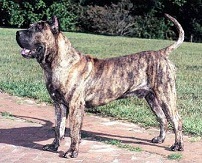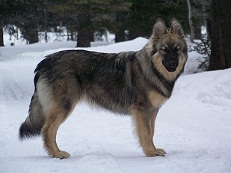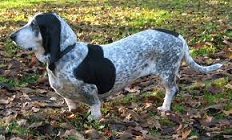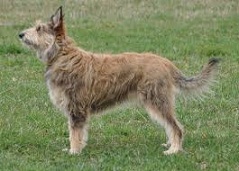Animal Shelter Daily Pet Tip Archive
Pet Tips and Pet Information

The American Bull Molosser
Similar to Alpine Dachsbracke, the American Bull Molosser is a scent hound, a guardian dog of uncertain origins, probably a mix between Rottweiler, Mastiff and a few other breeds, without many unique characteristics. Its creator designed it to be both the family pet and its protector. It is a medium- large size dog, very clever, cute when it is a puppy, with a large dose of heroism and courage in order to protect the pack and to please the leader. ...Read More...

The Ambullneo Mastiff
Obtained in the early 1980`s by crossing three related breeds of mastiffs (American, Neopolitan and Bullmastiffs) with 3 types of bulldogs and keeping only the best ones, the Ambullneo Mastiff is healthier than the breeds from which it originates. ...Read More...

American Alsatian
The American Alsatian is a companion dog first bred in 1987 in Southern California as a domestic dog. It is an inbreed between the Alaskan Malamute and the German Shepherd dog. The name of this breed has been changed many times during the years, from North American Shepalute, till 2004, when it was changed to American Shepalute, and then again in February 2010, when it was named the American Alsatian. ...Read More...

American Black and Tan Coonhound
The American Black and Tan Coonhound is thought to have descendants from the Talbot Hound and the Bloodhound. In America, they evolved from the American Foxhound and the Virginia Foxhound of colonial days; this was the first breed recognized as an independent breed from the Foxhounds, and the first coonhound. ...Read More...

The American Bully
Originally developed in the 90's from the American Staffordshire Terriers and the American Pit Bull Terriers, the American Bully is a controversial breed, being recognized by only a few organizations. Although this breed was created in America, nowadays there are specialized breeders almost all over Europe and Asia. ...Read More...

Basset Bleu de Gascogne
The Basset Bleu de Gascogne is a French native breed originating in the middle Ages.
This scent hound follows small prey and appears in many antique paintings in the South West of France. The breed almost went extinct in the 19th century, but, thanks to Alain Bourbon, the breed was saved and revived. This breed of dogs ...Read More...

The Bench-legged Feist
The Bench-legged Feist, as its name clearly indicates, is a member of the Feist family. These dogs, the feists, are quite small, initially bred in the south of the United States of America, in rural areas. Their main specialty and attribute is hunting small game like squirrels, birds or rabbits. Generally, they can live up to 15 years and, in rare cases, even longer. ...Read More...

Berger des Picard (The Picardy Shepherd)
Berger des Picard (also known as the Picardy Shepherd, Berger de Picardie, and Berger Picard) is a rare French dog breed from the herding class. After WWI and WWII, the breed was close to extinction. In 2004, the UKC officially recognized them. In the US, an organization named the Berger Picard Club of America was founded in 2006. ...Read More...

The Bergamasco
Originally used as a herding dog, the Bergamasco is renowned for its tumultuous shepherding history. Also known as the Bergamasco Sheepdog or Shepard, this breed is actually believed to have traveled from Persia to the Italian Alps, where it became one of the most popular breeds used by the local mountaineers and farmers to guard their animals. Because this dog became so attached to the Italian Alps, it draws its name from the town of Bergamo. ...Read More...

The Belgrade Terrier
The origins of the Belgrade Terrier are linked to the former Republic of Yugoslavia, a country that has a long history in the field of breeding dogs. The description of this dog’s body is often associated with the Dachshund and the Basset Hound. It is generally believed that these terriers have descended from the small-scaled domestic Greek dogs, also being related to another local breed, the Balkan Terrier. In the first part of the last century, they were used in ...Read More...




